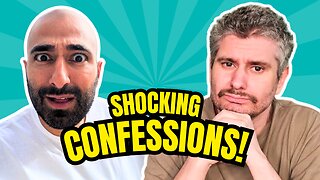How to Use GoPro Effectively and Creatively for Film Production
How to Use GoPro Effectively and Creatively for Film Production
Introduction Drones and GoPros are popular tools for capturing dynamic and immersive footage for film production. But how do you use them effectively and creatively without compromising quality or safety? In this article, we will share some best practices for shooting film with a drone or a GoPro, covering aspects such as planning, settings, composition, stabilization, and editing.
Planning Your Shots
Before you fly your drone or mount your GoPro, you need to have a clear idea of what you want to achieve with your shots. Think about the story, the mood, the angle, the movement, and the duration of...
Introduction Drones and GoPros are popular tools for capturing dynamic and immersive footage for film production. But how do you use them effectively and creatively without compromising quality or safety? In this article, we will share some best practices for shooting film with a drone or a GoPro, covering aspects such as planning, settings, composition, stabilization, and editing.
Planning Your Shots
Before you fly your drone or mount your GoPro, you need to have a clear idea of what you want to achieve with your shots. Think about the story, the mood, the angle, the movement, and the duration of each shot. Scout the location, check the weather, and obtain any necessary permissions or permits. Also, make sure your equipment is fully charged, updated, and calibrated.
Plan your shots: Have a clear idea of what you want to achieve with your shots
Consider the story, mood, angle, movement, and duration of each shot
Scout the location and check the weather
Obtain necessary permissions or permits
Ensure your equipment is charged, updated, and calibrated Adjusting Your Settings
Depending on the type and model of your drone or GoPro, you may have different options for adjusting the settings such as resolution, frame rate, ISO, shutter speed, white balance, and color profile. Generally, you want to choose the highest resolution and frame rate that your device can handle, while keeping the ISO as low as possible to avoid noise. You also want to match the shutter speed to the frame rate, using the 180-degree rule as a guideline. For example, if you shoot at 24 fps, your shutter speed should be around 1/50. You can also use ND filters to control the exposure and create a cinematic motion blur. For white balance and color profile, you can either set them manually or use the auto mode, depending on the lighting conditions and your editing preferences.
Adjust your settings: Choose the highest resolution and frame rate
Keep ISO low to avoid noise
Match shutter speed to the frame rate
Use ND filters for exposure control and motion blur
Set white balance and color profile manually or use auto mode depending on lighting conditions and editing preferences Composing Your Shots
One of the challenges of shooting with a drone or a GoPro is to compose your shots in a way that is visually appealing and coherent. For drones, you want to avoid sudden or jerky movements, and instead use smooth and fluid motions that follow the action or reveal the landscape. You can also use techniques such as tilting, panning, orbiting, or tracking to create dynamic and varied shots. For GoPros, you want to avoid distortion and fisheye effects, and instead use the linear or narrow modes to correct the lens curvature. You can also use accessories such as mounts, poles, or gimbals to position and stabilize your GoPro in different ways.
Compose your shots: Avoid sudden or jerky movements with drones
Use smooth and fluid motions that follow the action or reveal the landscape
Experiment with techniques like tilting, panning, orbiting, or tracking
Avoid distortion and fisheye effects with GoPros
Use linear or narrow modes to correct lens curvature
Utilize accessories like mounts, poles, or gimbals for stabilization and positioning Even with the best equipment and techniques, you may still end up with shaky or unstable footage when shooting with a drone or a GoPro. To fix this, you can use software tools such as Adobe Premiere Pro, Final Cut Pro, or DaVinci Resolve to apply stabilization effects or warp stabilizers to your clips. However, be careful not to overdo it, as too much stabilization can result in unnatural or distorted footage. You can also crop or reframe your footage to eliminate unwanted edges or movements.
Stabilize your footage: Use software tools like Adobe Premiere Pro, Final Cut Pro, or D...
-
 23:16
23:16
Alexis Wilkins
12 hours agoBETWEEN THE HEADLINES WITH ALEXIS WILKINS: UKRAINE HIT LIST, HOUTHIS, AG GARLAND, HUNTER BIDEN TRIAL
27.1K15 -
 33:10
33:10
The Nima Yamini Show
8 hours agoAlpha King Nima Exposes All on H3 Podcast!
38.9K8 -
 27:12
27:12
DepressedGinger
1 day ago $0.05 earnedALL 50 US States Election Predictions right now!
48.7K20 -
 40:51
40:51
Candace Owens
11 hours agoAnother Person Fired For Criticizing Israel?! | Candace Ep. 5
37.1K118 -
 LIVE
LIVE
Right Side Broadcasting Network
5 days agoLIVE REPLAY: President Trump Celebrates His Birthday at Club 47 - 6/14/24
2,976 watching -
 49:57
49:57
The StoneZONE with Roger Stone
9 hours agoOwen Shroyer & Roger Stone Together For What Could Be The Last Time On Infowars | The StoneZONE
51.8K20 -
 1:05:07
1:05:07
Edge of Wonder
13 hours agoJesus’ Childhood Revealed in Manuscript & Britney Spears Mandela Effect
59.1K46 -
 1:52:18
1:52:18
2 MIKES LIVE
11 hours ago2 MIKES LIVE #78 OPEN MIKE FRIDAY!
62.1K9 -
 1:01:10
1:01:10
Talk Nerdy 2 Us
9 hours agoConspiracy or Reality? Unpacking Today's Most Controversial Debates on 'Talk Nerdy 2 Us
44.1K2 -
 2:11:43
2:11:43
Revenge of the Cis
13 hours agoEpisode 1358: Home Sweet Home
73.9K24